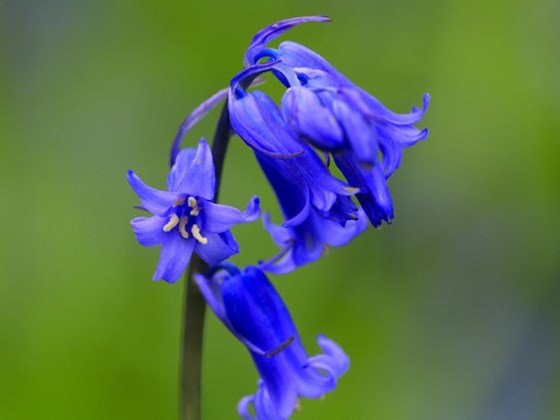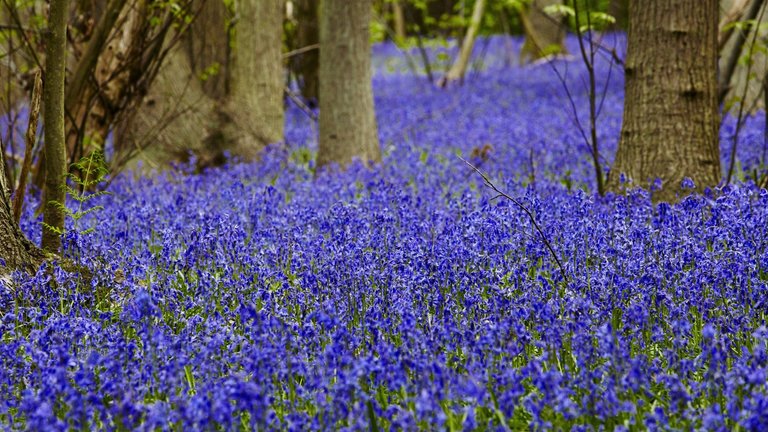Bluebells: The survival battle of Britain's native bluebells
Britain's native bluebells are under threat from an aggressive hybrid, so could they disappear completely?
The bluebell is a quintessential sign of British springtime, with the vast spreads of tiny blue flowers found across Britain in April and May.
In fact, the UK's woodlands are home to almost 50% of the global population of our native bluebell (Hyacinthoides non-scripta). With its unique scent and the very delicate form and structure of the flowers, it is an extremely special flower, say experts.
"We have some of the best bluebell carpets in the world," says Katie Lewthwaite of the Woodland Trust. "People don't necessarily realise, but we've got just the right damp climate for them."
But our native bluebell is now under threat from an aggressive hybrid. And with the UK being home to such a large chunk of the world's population, it means this bluebell is threatened on a global scale. It's ringing alarm bells for conservationists.

Many of the bluebells found in our gardens and urban areas are not the traditional British flower, they are in fact an aggressive hybrid (Hyacinthoides x massartiana) - the product of cross-breeding between the native bluebell and the Spanish variety (Hyacinthoides hispanica).
This hybrid was first recorded in the wild in 1963. It's highly fertile and has spread rapidly in the UK's urban areas.
But more worryingly, its distribution has also been increasing in woodland areas - the preferred habitat of the UK's native bluebell and home to some of its oldest populations.
"Evidence shows that when a hybrid bluebell has got into a woodland area it does have the ability to take over," says Nicola Hutchinson, head of conservation for the UK charity Plantlife.

"Native bluebell woodlands are one of Britain's most iconic countryside images and we should make every effort to protect them."
There are concerns that hybridisation could dilute the distinctive traits of our native bluebell over time, according to Dr Mark Spencer from the Natural History Museum.
To make matters more complicated, identifying the hybrid in order to assess its rapid spread is no simple matter - even botanists struggle to tell them apart, says Spencer.
When identifying bluebells, it is important to look at flowers that have just opened. Older flower spikes are less unidirectional and more upright. Also pollen may be lost and the flowers could have lost their scent.
"The hybrids are incredibly variable, which makes identifying them difficult," says Spencer. "Some hybrids will be almost identical to the Spanish plant, while others are almost identical to the native.
 https://www.bbc.com/news/magazine-17597489
https://www.bbc.com/news/magazine-17597489
Source
Spam is discouraged by the community, including comment spam.
More Information:
The Art of Commenting
Comment Classifications
magoo-2 found a series of multi accounts of a same owner is following your articles to cheat your generous rewards.
magoo-2 found these accounts are suspicious & can be multi accounts of a single owner. Conclusion is based on last 30 days transactions:
@moniristi @shishiristi @aflatunnisa @hafez @shihabieee @mrashik
magoo-2
Check our latest multi comment spam update report